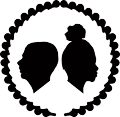Origin part II: Balance
In collaboration with Sidreh
Lakiya, Israel
Balance is the results of our collaboration with Sidreh and the women weavers in Lakiya.
Lakiya Negev Weaving is an organization of Bedouin artisans, initiated by Sidreh, a non-profit organization focused on improving the socioeconomic situation of Bedouin women living in Israel’s Negav Desert.
Balance consists of a series of seven area rugs woven in the Bedouin tradition by the women in Lakiya, Israel. Each rug is hand woven on traditional ground looms using the wool of local desert sheep.
From the dying of the yarn to the weaving and final construction, each rug is the result of the collaborative efforts of many of the women in Lakiya. Through a craft that is central to Bedouin social and cultural heritage, the weavers are able to produce an extremely high-quality, durable and beautiful material.
By creating a culturally acceptable employment opportunity for women, Lakiya Weaving produces short-term and long-term benefits to the Arab Bedouin community.
The project remains the only possible employment for many isolated women who have suffered from the impacts of social upheaval. Sidreh’s focus is to empower, represent, and improve the socioeconomic situation of these Bedouin women, women who exist in a constant state of inequality, of imbalance.
During our second visit to Lakiya, we had the opportunity to visit some villages in the area that remain unrecognized by the authorities. Throughout our time in these villages, we were continually overwhelmed by the positive attitudes of the women we encountered. We became increasingly inspired by the choice they have made to focus on their optimistic progress, rather than their more obvious hardships.
Balance is our response to this optimism, that in the midst of adversity and misfortune there is a lasting element of proportion and beauty.
Drawing from the surrounding landscape of the Negev Desert in both color and texture, each piece in Balance pushes the perceived confines of traditional woven dimensions and expected application of decorative elements.
The rugs are the result of working within the boundaries of the Bedouin weaving practice, where it is only possible to weave long, narrow strips of material. The strips are then cut and repositioned to create non-traditional and innovative silhouettes that generate new and exciting placement possibilities within the interior.
Balance embodies the possibility of finding a modern context for an ancient craft.
—
With special thanks to:
Sidreh, Hala Abu Shareb, Elio Nudelman, Salem van der Swaagh, Khadra Elsana, Heigar El Sana, Yusra Abu Syam, Siham Salameh, Nura Sana, Aisha Abu Muhareb, Um Khaled Al Sanah, Um Atef Abu Muhareb, Safa Garb, Maya Zimmermann, Maayan Pesach
———
process

































